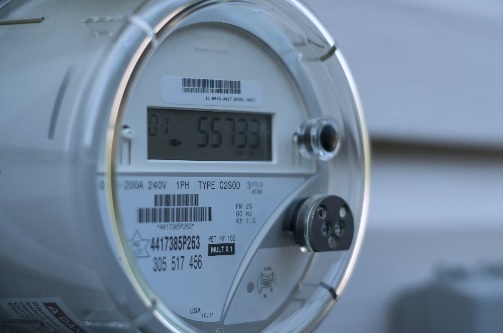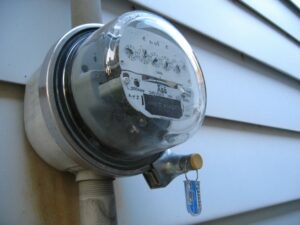Understanding how much electricity you use can help you figure out what usage is necessary and where you might be able to reduce it. Keeping tabs on your electric meter can give you an early warning of unusually high usage, so you can avoid any surprises on your electric bill.
What is an electric meter?
We’ve all seen one on the outside of our homes. An electric meter measures the total power that is consumed for a given period of time. Also called an electricity meter, a kilowatt-hour meter, or an electrical meter, this instrument converts kilowatts (KWH) into billing units. The more electricity you use, the more you pay. It is common for electrical meters to be found outside close to the breaker box of a building. Electrical meters can also be found inside, in crawl spaces or basements, also near your home’s breaker box.
Your home may have the old fashion Dial Meter or a newer Digital Meter. Simply looking at the face of the meter will tell you which one you have.
How to read a dial meter?
Dial meters are distinguished by their clock-like faces and dial barometers. Even if you’re not an electrician, you can figure out how to read a dial electric meter. Dials may not twirl in the same direction, and it takes some practice. With this knowledge, you can calculate how much you use and get an idea of how much the bill will be.
ON YOUR METER YOU WILL FIND FIVE DIALS THAT GO FROM 0 TO 9. HERE IS HOW YOU READ THEM:
- Start at the leftmost dial, which should be marked “10,000.”
- If the dial points directly at a number, write down that number.
- If the dial is between two numbers, write down the smaller number, regardless of which is closer to the dial.
- If the dial is between zero and nine, write down nine.
- Repeat for each dial, going from left to right. The resulting five-digit number is your kilowatt-hour reading.
After you’ve calculated your reading, you can see how it changes from month to month to gain a better understanding of your energy use.
How to read a digital meter?
A digital meter has a digital face LCD display that reports the exact kWh in numbers. Electric meters with a digital display give you a clear view of how much electricity is flowing. The display may need to be lit up first, then you can read the numbers from left to right. Each number except for those in red or with a red background should be written down. Each number is divided into two lines for day and night use.
When you use a dial-type meter, you can compare your consumption month to month and find out quickly if you are using more energy than usual.
Compared with a dial meter, digital meters provide a more frequent reading of your consumption. It is even easier to track your consumption if your utility company already has smart meters. Its digital display makes it easy to read, but it can also provide updates as often as once every fifteen minutes. As a result, you can get an alert in real-time if your usage spikes, allowing you to locate the problem before you receive a huge bill.
Do you have solar panels?
A digital smart meter is usually installed on solar panels that can read a variety of readings. You will be able to see how much electricity you consume from the utility grid, or how much you are returning to it if the system allows this.
Note:
A power outage does not necessarily mean that the electricity has gone out. A power outage only affecting your house could mean that your meter has pulled away or become disconnected from it. The meter stops working once it’s not connected to your home, so the electric unit stops working. It is always important to report any outages to your electric provider. Once a report is made, they will follow up by letting you know additional information. It will also alert them to any potential issues within your structure’s electrical system. Always leave issues to a professional like Blessed Electric and Air.
CONCLUSION:
Monitoring your consumption and checking the utility meter will let you know if you have been overcharged accidentally and help you keep track of your monthly charges


